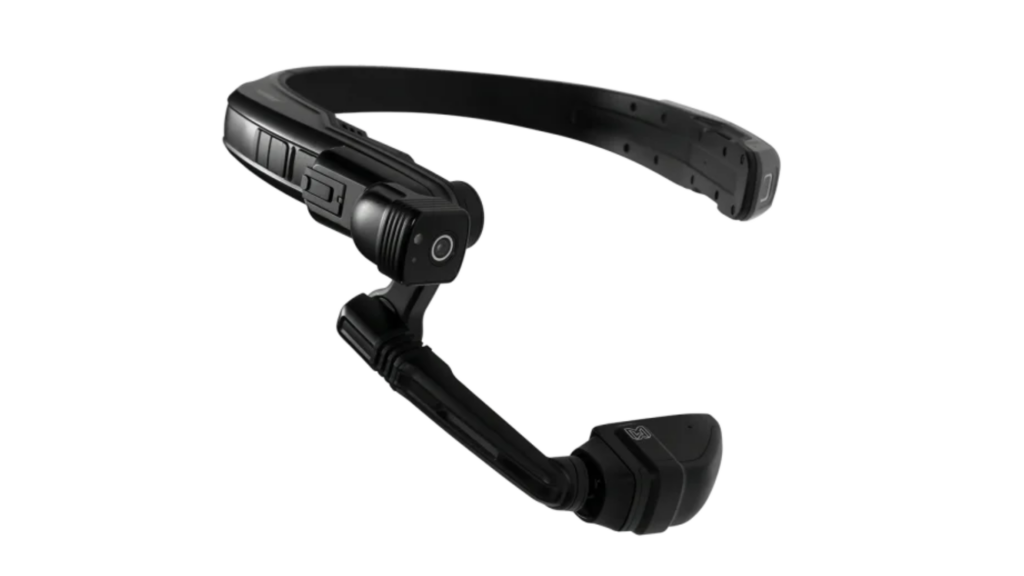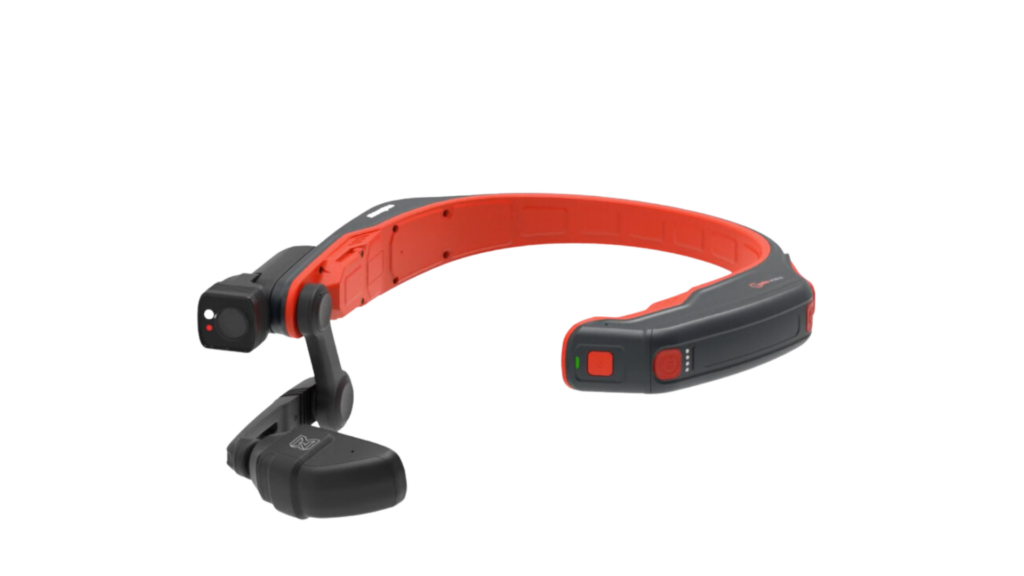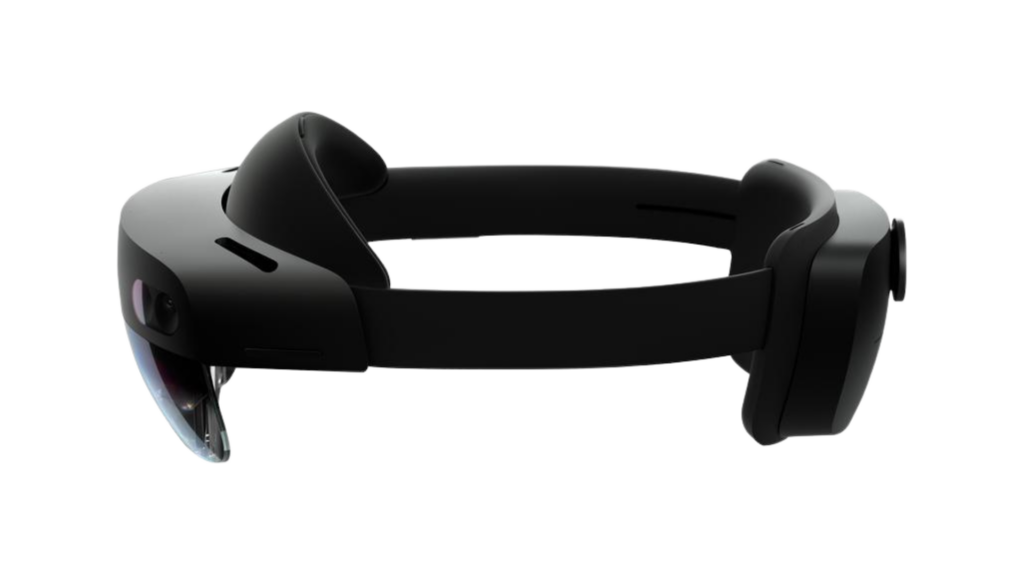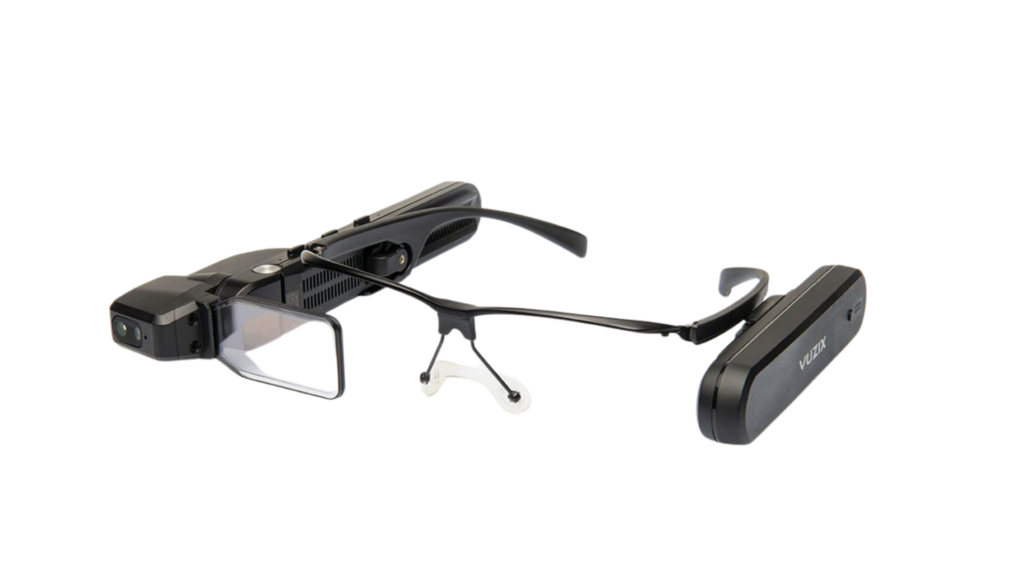Technology advancement has been going strong for a while. Quite the opposite – all signs on heaven and earth indicate an even more incredible pace of development in hi-tech areas.
While we appreciate various solutions and equipment, including state-of-the-art 3D printers, flying motorcycles, or bionics, we focus on our field – AR.
Is AR still in?
Augmented Reality technology will remain one of the most essential in the coming years. Its broad scope of applications and usages spanning various industries consolidates its core position. So, is augmented reality the future? It is (in maaany fields of life), and we’re ready to die on that hill.
With 2024 just around the corner, here’s to the vital Augmented Reality trends in equipment and software.
Top AR Trends 2024
The top Augmented Reality (AR) trends in 2024 are diverse and innovative, signaling significant technological advancements and applications across industries. Connecting the physical and digital worlds gives users a new quality, which is why they are used in many industries.
Meet some of the key trends:
Generative AI Solutions and Multi-Sensory Technology
Integrating generative Artificial Intelligence (AI) with AR is expected to enhance the creation of digital worlds, artwork, and realistic characters. There is also a focus on multi-sensory technology, including haptic gloves and devices that stimulate senses like smell, to create more immersive experiences.
Advancements in AR Hardware
Apple’s improvements in motion capture and people occlusion are notable, as is the potential of LiDAR scanning for creating detailed floor plans and (AR) Augmented Reality measurement tools. The competition between Apple’s ARKit and Google’s ARCore continues, with both striving to enhance Augmented Reality experiences through sophisticated hardware and software.
WebAR and Cross-Platform AR
WebAR, which doesn’t require additional software downloads, offers essential but accessible AR experiences. Cross-platform AR, on the other hand, balances performance and accessibility, catering to a broader range of devices but with some limitations compared to native apps.
AR in Retail and Live Shopping
AR is increasingly used in retail for virtual try-ons and to enhance the shopping experience. Live shopping, where Augmented Reality plays a crucial role in product demonstrations and interactions, is expected to grow significantly, with sales projected to reach significant figures in the USA alone by 2024.
AR in Diverse Industries
The application of AR in education, healthcare, and marketing is evolving rapidly. Augmented Reality brings textbooks to life with interactive 3D models in education, while in healthcare, it aids in surgeries and medical training. Marketing is utilizing AR for interactive campaigns and virtual product try-ons.
AR-Based Gaming
Gaming is a significant driver for AR, with developers creating better AR devices and integrating AR elements into traditional games. Startups like Mohx-games and smar.toys advance multiplayer AR game development and combine AR gameplay with physical toys.
Mobile AR Tools
Smartphone technology advances enable more accurate and immersive mobile Augmented Reality experiences. Tools for tracking, image recognition, and 3D rendering are becoming more sophisticated, aiding in developing AR apps for various industries.
Wearables and AR Controllers
Wearable AR devices, such as smart glasses and head-mounted displays, are gaining traction. They offer hands-free experiences and are particularly useful in industries like manufacturing and logistics. Startups like ARKH are developing wearable AR controllers for more intuitive interactions.
Harmonious Fusion of Virtual Reality and AR
There is a growing trend of blending Virtual and Augmented Reality to create mixed-reality experiences. This integration allows for a new wave of AR experiences in gaming, storytelling, and immersive simulations.
AR Super Apps
The development of AR super apps is on the rise, offering a range of augmented experiences within a single platform. These apps aim to provide seamless transitions between various Augmented Reality applications, enhancing user convenience and engagement.
Considering the trends in new technologies and the best possible user experience, AR technology will continue to evolve and expand its impact in various sectors, offering more immersive, interactive, and innovative experiences.

presentation to try
Nsflow in action
Best Industrial-Grade Augmented Reality (AR) Glasses 2023
The constant advancements of everyday devices, smartphones, and tablets will continue to significantly lower the tech threshold for those entering the AR field. Nonetheless, it’s the dedicated equipment that is the center of attention.
Check a list of smart glasses best suited for industrial conditions:

RealWear Navigator 520
The RealWear Navigator 520 is a rugged, hands-free, wearable computer designed for industrial use. It is part of RealWear’s lineup of head-mounted devices to enhance productivity and safety for frontline workers in various industries like manufacturing, maintenance, and field services. Here are some key features of the RealWear Navigator 520:
- Display: It features a micro-display that gives the user a view equivalent to a 7-inch tablet screen. This display is designed to be clear and legible even in various lighting conditions.
- Voice-Controlled Interface: The device is operated primarily through voice commands, allowing for hands-free use. This is particularly useful when workers need to use their hands for other tasks.
- Camera Functionality: Equipped with a high-resolution camera, the Navigator 520 allows users to capture images or videos of their work area, essential for documentation, remote assistance, or troubleshooting tasks.
- Rugged Design: Built for harsh industrial environments, the device is ruggedized to withstand drops, dust, and water exposure. It’s designed to be durable enough to handle the rigors of fieldwork.
- Connectivity typically includes Wi-Fi and Bluetooth connectivity, enabling easy integration with other devices and systems for data transfer and communication.
- Adjustable and Comfortable: The device is designed to be comfortable for all-day wear and can be adjusted to fit different head sizes and shapes. It can also be used with safety helmets and eyewear.
- Battery Life: The Navigator 520 is designed with a battery life suitable for an entire work shift, acknowledging the need for reliability in continuous operation settings.
- Software and Applications: The device supports various industrial applications, facilitating tasks like viewing PDFs, augmented reality overlays, and remote expert support.
The RealWear Navigator 520 is a tool aimed at enhancing efficiency and safety in industrial settings, providing a wearable, hands-free computing solution tailored to the needs of frontline workers.
RealWear Navigator Z1

The RealWear Navigator Z1 is an advanced, intrinsically safe wearable device designed primarily for frontline workers in hazardous environments, such as oil and gas, pharmaceuticals, and mining industries. This device is built to handle these sectors’ demanding and potentially dangerous conditions.
Key features and benefits of the RealWear Navigator Z1 include:
- Performance and Specifications: It comes equipped with a Qualcomm QCS6490 chipset and offers four times the RAM compared to its predecessor, the HMT-1Z1, providing enhanced performance in harsh environments. The device features a 20% larger HD display and a 48MP camera with advanced image stabilization. It also includes Wi-Fi 6/6E connectivity and is 5G-ready, making it suitable for fast and efficient communication.
- Designed for Hazardous Environments: The Navigator Z1 is intrinsically safe and certified for use in environments with a risk of explosion or fire due to flammable gases, vapors, or dust. It’s also 2M drop-tested and offers IP66 dust/water protection, ensuring durability and reliability in challenging conditions.
- Hands-Free Operation: The device supports voice-enabled hands-free operation up to 100 dBa in noisy environments, which is crucial for safety and efficiency in industrial settings.
- Safety and Productivity: The RealWear Navigator Z1 is designed to enhance both safety and productivity. It enables remote collaboration with experts, allows for hands-free operation and digital workflow integration, and minimizes downtime in production environments. The device’s Artificial Intelligence capabilities and 5G connectivity further improve its functionality and user experience.
- User-Friendly Design: Despite its rugged design for industrial use, the Navigator Z1 is lightweight and comfortable for all-day use. It is compatible with various safety equipment like helmets and safety glasses, ensuring it can be seamlessly integrated into the existing safety protocols of multiple industries.
- Additional Features: The Navigator Z1 offers a wide range of features like a HyperDisplay with a resolution of 1280 x 720 pixels, an Android 12 platform, 128 GB internal memory, 8 GB RAM, and support for numerous applications. It also includes modern data connections and various interfaces like Bluetooth LE 5.2, GPS, and a USB-C port for data and charging.
RealWear Navigator Z1 stands out as a cutting-edge solution for industries that operate in challenging and hazardous environments, offering a combination of safety, performance, and advanced technology to meet the needs of frontline workers.
Microsoft HoloLens 2

While we wait for Microsoft HoloLens 3, we cannot mention its predecessor. The Microsoft HoloLens 2 is a state-of-the-art MR headset for various professional applications, including design, manufacturing, healthcare, education, and retail. This headset integrates advanced technologies to facilitate immersive experiences in both industrial and creative environments.
Key features and benefits of the Microsoft HoloLens 2 include:
- Performance and Specifications: The HoloLens 2 is powered by a Qualcomm Snapdragon 850 Compute Platform, providing robust performance for complex applications. It features a high-resolution holographic display with a 52-degree field of view, bringing immersive, 3D digital content into the real world. The device supports Wi-Fi connectivity, ensuring seamless data transmission and communication.
- Ergonomic and User-Friendly Design: Designed for comfort, the HoloLens 2 is lightweight and balances its weight more evenly around the head. It offers a dial-in fit system for a custom fit, making it comfortable for extended use. The device also includes a visor that can be flipped up for easy transition between physical and holographic environments.
- Interactive Experience: The HoloLens 2 allows intuitive hologram interaction through hand-tracking and eye-tracking technology, enabling natural gestures and commands. This enhances the user’s ability to seamlessly manipulate and interact with 3D holographic content.
- Application in Diverse Industries: This device finds applications in numerous sectors. For instance, in healthcare, it can assist in complex surgeries and training; in manufacturing, it aids in design, training, and collaborative work; and in education, it offers immersive learning experiences.
- Enterprise-Ready: The HoloLens 2 is built with enterprise usage in mind. It offers robust security features, can be managed with standard IT tools, and supports a range of applications tailored for business use. This makes it a valuable tool for enterprises seeking to leverage mixed reality for training, remote assistance, or spatial design.
- Enhanced Safety and Productivity: With its hands-free operation, the HoloLens 2 is ideal for professionals who need access to information and collaboration tools while working hands-on. It also supports remote assistance features, allowing experts to guide and collaborate with field workers in real time.
- Additional Features: The HoloLens 2 includes built-in spatial sound, which helps users hear holograms wherever they are in space, enhancing the immersion and realism of the mixed reality experience. It also provides an 8MP camera for capturing images and video and multiple microphones and sensors to support voice commands and environmental understanding.
The Microsoft HoloLens 2 is a versatile and powerful tool in mixed reality. Its advanced holographic technology, ergonomic design, and enterprise-focused features make it a key asset for professionals across various industries, offering innovative ways to work, collaborate, and create.
Vuzix M4000

The Vuzix M4000 is a sophisticated Augmented Reality glasses designed for professionals across various industries, including manufacturing, logistics, healthcare, and field services. This device is engineered to enhance efficiency, accuracy, and safety in diverse working environments.
Key features and benefits of the Vuzix M4000 include:
- Performance and Specifications: The Vuzix M4000 has a Qualcomm XR1 processor optimized for AR applications. It features a transparent waveguide display, providing a see-through, heads-up experience with a resolution of 854×480 pixels. The device includes a 12.8MP camera capable of recording 4K video, autofocus, and image stabilization. It supports Wi-Fi and Bluetooth connectivity for seamless communication and data exchange.
- Designed for Professional Environments: While not intrinsically safe like the RealWear Navigator Z1, the M4000 is robust and designed for professional use. It includes an IP67 rating for dust and water resistance, making it suitable for outdoor and industrial environments. Its durability is further evidenced by its drop-test certification, ensuring it withstands the rigors of daily use in challenging conditions.
- Hands-Free Operation: The Vuzix M4000 offers hands-free operation, which is crucial for professionals who need to access information while working with their hands. It supports voice commands and touchpad control, allowing users to navigate menus and applications quickly without manual handling.
- Enhancing Productivity and Safety: The M4000 AR glasses are designed to improve workplace productivity and safety. They enable remote expert support, allowing field workers to receive real-time guidance and assistance. This feature mainly benefits complex tasks, reducing the need for back-and-forth travel and enhancing on-the-job training.
- User-Friendly and Comfortable Design: The M4000 prioritizes user comfort with its ergonomic design. It is lightweight and can be worn comfortably for extended periods. The device is compatible with safety helmets and glasses, making it adaptable to various workplace safety standards.
- Additional Features and Compatibility: The M4000 supports a range of applications tailored for enterprise use, from remote assistance to workflow management. It runs on the Android operating system, allowing easy integration with existing mobile applications and IT infrastructure. The device also includes features like GPS, a USB-C port for charging, and expandable memory options.
In summary, the Vuzix M4000 is a versatile and powerful tool in AR smart glasses. Its blend of advanced Augmented Reality technology, durable design, and user-friendly features make it an invaluable asset for professionals seeking to leverage augmented reality for enhanced productivity, training, and operational efficiency in various industrial and field settings.
What is the Future of AR Technology?
The future of Augmented Reality (AR) is thriving and multifaceted. The AR market is expected to grow significantly, especially in regions like North America, a cutting-edge technology and innovation hub. This growth is fueled by the expanding applications of AR in various industries, including retail, automotive, and healthcare.
Industry forecasts suggest robust growth in the AR market, with projections indicating a compound annual growth rate (CAGR) of 50.7% from 2023 to 2030. Additionally, the AR/VR market is expected to reach $50.9 billion by 2026, growing at a five-year compound growth rate of 32.3%.
These developments across diverse sectors indicate a bright and expansive future for augmented Reality, transforming how we interact with technology daily and across various professional domains.



















